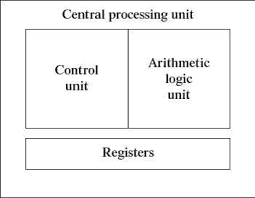A Brief History Of Intel And Its CPU
The CPU resides in almost all devices you own, whether it's a smartwatch, a computer, or a thermostat. They are responsible for processing and executing instructions and act as the brain of your devices. Here we explain the cpu full form in computer how CPUs interact with other parts of your device and make them so integral to the computing process.
What makes a CPU a CPU?
What is the full form of CPU? The CPU is the main component that defines a computing device, and while it is important, the CPU can only work with other hardware. The silicon chip sits in a special socket located on the main circuit board (motherboard or mainboard) inside the device. It is separate from memory, where information is stored temporarily. It is also different from a graphics card or graphics chip, which presents video and 3D graphics displayed on your screen.
CPUs are made by placing billions of micro transistors on a computer chip. That transistor allows it to perform the calculations needed to run programs stored in your system's memory. They are effectively minute doors that turn on or off, send messages to people, or voice whatever you do with the device, whether it's watching videos or composing emails.
The most common advancement in cpu full form, its technology is that it makes the transistor smaller and smaller. This has resulted in improved CPU speeds over the decades, often referred to as Moore’s Law.
In the case of modern devices, desktops or laptops have a dedicated CPU that performs many processing functions for the system. Instead, mobile devices and some tablets use System on Chip (SoC) which is a chip that packages the CPU with other components. Both Intel and AMD offer CPUs with graphics chips and the memory stored on them, meaning they can do more than just standard CPU functions.
What does the CPU really do?
At its core, the CPU takes and calculates instructions from a program or application. The process is divided into three main stages: Receive, Decode, and Execute. The CPU receives the instruction from RAM, what the instruction really is, and then executes the instruction using the respective parts of the CPU.
Running instructions or calculations, basic arithmetic, comparing numbers, performing tasks or moving numbers in memory. Everything in a computing device is represented by numbers, so you can think of a CPU as a calculator that runs incredibly fast. The resulting workload can start Windows, display a YouTube video, or calculate compound interest in a spreadsheet.
In modern systems, the CPU acts like a ringmaster in a circus because it delivers data to the required hardware. For example, the CPU needs to show the graphics card a blast because you've shot a fuel drum or to move a solid-state drive to the system's RAM for quick access to office documents.
Cores, watches and costs
Basically, a CPU has a single processing core. Today’s modern CPU has multiple cores that allow it to deliver multiple notifications at once, effectively coxing multiple CPUs on a single chip. Most CPUs sold today have two or four cores. Six cores are considered mainstream, while more expensive chips range from eight to a huge 64 cores.
Many processors also use a technology called multi threading. Imagine a single physical CPU core that can run two lines of execution (threads) simultaneously, with the end of the operating system appearing as two "logical" cores. These virtual cores are not as powerful as physical cores because they share the same resources, but overall, they can help improve the multitasking performance of the CPU while running compatible software.



Comments
Post a Comment